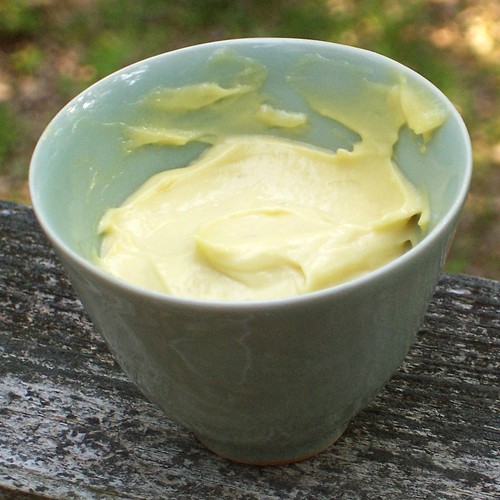Gentle readers, if you want to know why I'm a government apparatchik instead of a media personality, my performance in that interview explains it all. I am not always eloquent when put on the spot. Worse, when prodded for a recipe, I said 'Oh, just omelettes or salads from whatever I have around.'
*facepalm*
OK, yes, I've been hot and busy, and I did say just last week that most of what I was making for dinner was salads of whatever was in the fridge. It's not that what I told the reporter was inaccurate. Nor is it that making omelettes or salads out of what I have in my refrigerator is a recipe for disaster instead of dinner. But I make a hobby of recipes, and so when someone asks for a recipe, I like to give them a recipe. What happened? Hanging curveball, right over the plate, and I choked.
As penance, therefore, I present a recipe for aïoli, which I make from eggs and smoked garlic I buy at the market. Smoking sweetens the garlic and makes it milder, but a full head of it is still potent. You may, of course, use plain garlic if you don't have smoked garlic available.
This aïoli is based on Elizabeth David's recipe in French Provincial Cooking
 , a book that I cooked from nearly every week I lived in St Andrews. In retrospect, I wonder how, because while it is undoubtedly a great book, it is not a very friendly one. The few illustrations are line drawings. The type is small. The ingredients may be hard to find outside France. The directions are vague by modern standards.
, a book that I cooked from nearly every week I lived in St Andrews. In retrospect, I wonder how, because while it is undoubtedly a great book, it is not a very friendly one. The few illustrations are line drawings. The type is small. The ingredients may be hard to find outside France. The directions are vague by modern standards. It occurs to me, though, that one might also argue that modern recipe directions discourage creativity. That may be why I turned to French Provincial Cooking in the first place. It assumes that the reader knows how to cook, and is clever enough to adapt (and overcome, when necessary). Cooking on a two-burner Baby Belling in a closet-sized university kitchen shared by 6 people required plenty of adapting (to say nothing of overcoming). French Provincial Cooking provided not just inspiration but also a certain confidence. Elizabeth David believes I can do this, here, in this closet-kitchen, where the counterspace is actually a chopping board laid over the sink. And so I can.
I make aïoli in a food processor, which shortens the time needed but does not exactly make it fast. If you have an afternoon, and a helper, by all means use a wooden spoon and large mortar.
To make aïoli, you need:
1 head smoked garlic, cloves separated and peeled
3 egg yolks at room temperature
1 1/4 cup good quality olive oil
juice of one or two lemons (to taste)
salt
Puree the garlic in the bowl of a food processor or crush it to a paste in a large mortar. Add the egg yolks and a pinch of salt, then stir until thoroughly combined.
Add the olive oil a few drops at a time, stirring after each addition. In the food processor I pulse 6 or 7 times after adding the oil.
When you have used about half the oil, you can start adding it in a continuous thin stream, stirring contstantly. (This is the part where you will need a helper if you are doing this by hand; someone else should manage the stirring constantly while you manage the pouring in a continuous thin stream).
Makes about a pint of aïoli. Keeps about a week in the refrigerator, or about 2 hours out of it.
The finished product should be very thick, very garlicky, and much yellower than commercial mayonnaise. I like it better the second day, when it's had a chance to mellow a little.

What do you do with this pint of garlic mayonnaise that you need to use up in a week -- beyond possibly dressing a salad made of whatever's in your refrigerator? In addition to all the other common uses of mayonnaise, Food52 recently had a contest for Your Best Use of Aïoli, which may provide further inspiration.
Thomas Bailey Aldrich

No comments:
Post a Comment